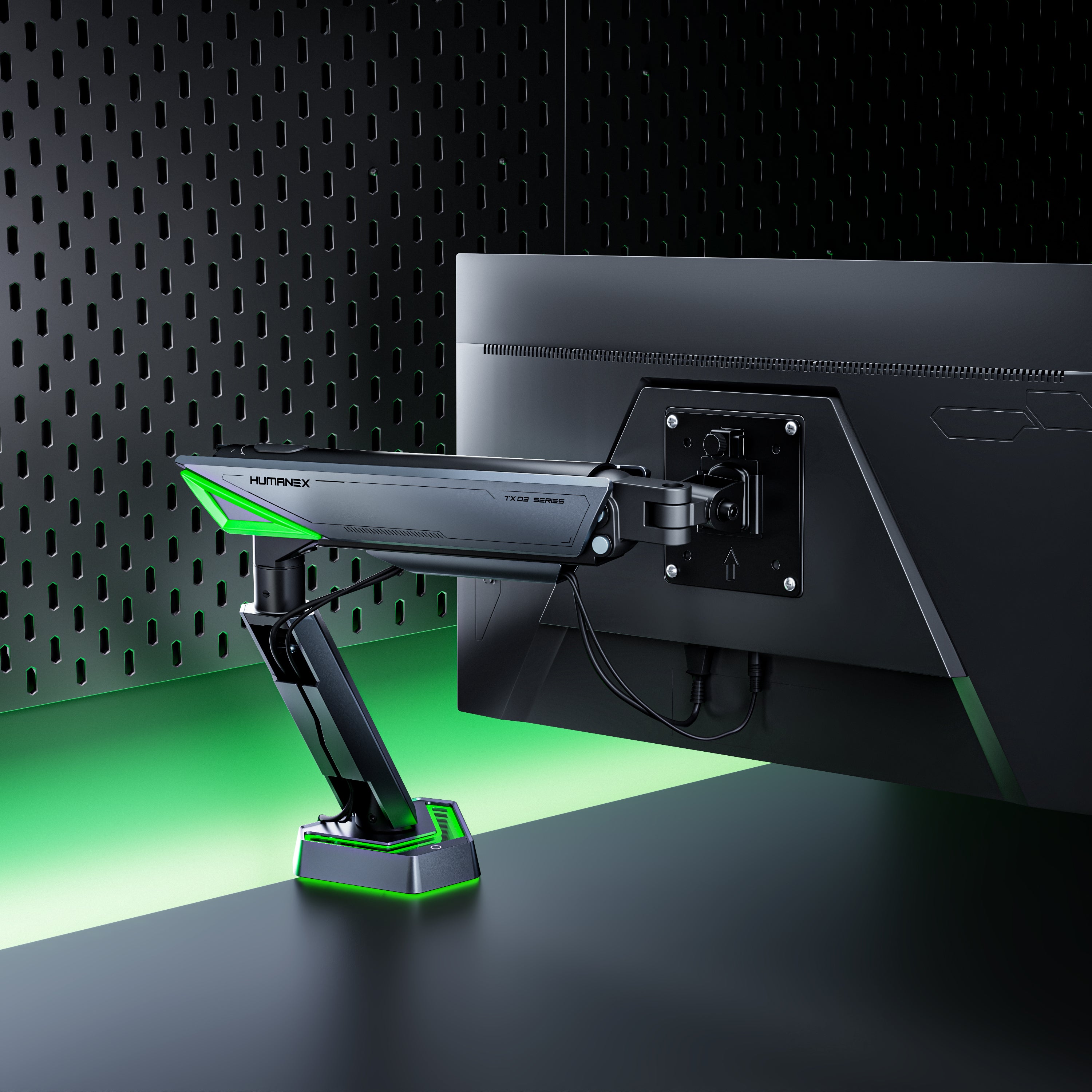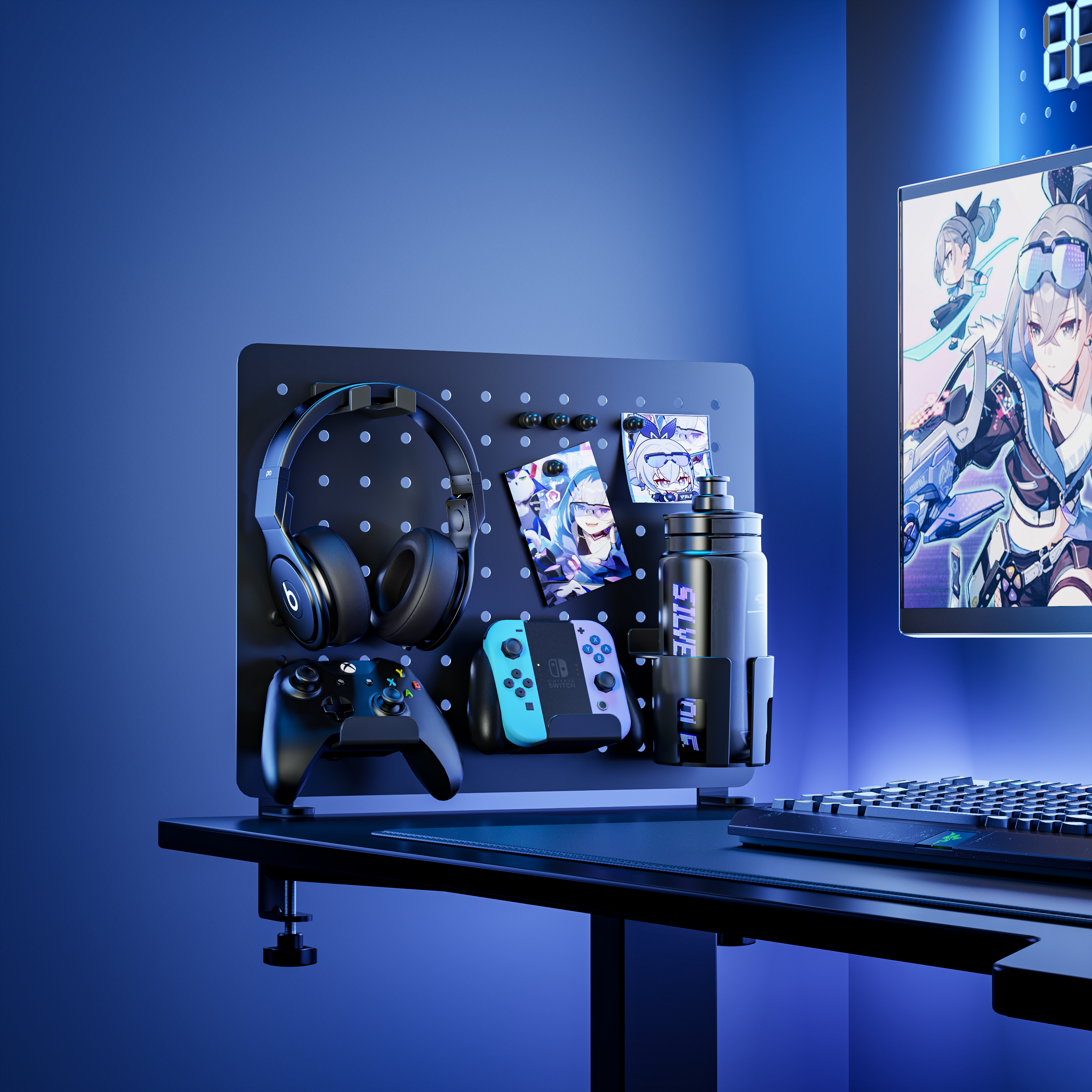The Perfect Distance Formula: Calculating and Setting Optimal Monitor Viewing Distance and Height for Eye Health
Introduction
-
State the Pain Point: If you spend extended hours in front of a screen, do you struggle with eye strain, dryness, or stiff neck/shoulders? These issues are often not the fault of the work itself, but the result of an improperly positioned monitor. Many adjust based on feeling, neglecting scientific ergonomic standards.
-
Core Value Proposition: This article provides a set of precise formulas rooted in ergonomics and visual health to guide you in setting the ideal viewing distance, height, and tilt angle customized for your body and screen size.
-
Tool Emphasis: We will stress that achieving these precise, repeatable adjustments is impossible with bulky, fixed-height factory stands, making a high-quality, fully articulating monitor arm an essential tool.

Formula Part I: Calculating Your "Ideal Viewing Distance"
Viewing distance dictates the muscular tension in your eyes and the comfort of your field of view.
1. The Foundational Rule: The Arm's Length Principle
-
Definition: The simplest and most universal guideline: The screen should be positioned between 50 cm and 100 cm (approximately 20 to 40 inches) from your eyes, roughly the length of one outstretched arm.
-
Scientific Rationale: This distance minimizes the need for excessive accommodation (the eye's focusing effort), which is the primary cause of asthenopia (eye strain).
2. Advanced Consideration: Size and Field of View Formula
-
Why Go Beyond the Basic Rule? Larger screens (e.g., 32-inch or ultrawides) or high-resolution displays require more nuanced placement to prevent eye travel fatigue.
-
Visual Angle Comfort Zone: The ideal distance should comfortably allow your central vision to encompass the entire screen without requiring frequent head or neck rotation.
-
Common Consensus: A distance of 1.2 to 1.5 times the screen's diagonal size is often cited as the comfort sweet spot (e.g., a 27-inch monitor needs approximately 32–40 inches of distance).
-
-
The Arm's Value: Articulating monitor arms provide the necessary reach and flexibility to achieve and maintain these specific distances, especially critical on deep desktops.
Formula Part II: Setting the "Optimal Viewing Height"

Correct screen height is the key to maintaining a neutral spine and eliminating neck and shoulder tension.
1. The Golden Height Rule: Top Edge Alignment
-
Basic Guideline: When sitting upright with a neutral neck position, the top edge of the screen should be at or slightly below your horizontal eye level.
-
Scientific Rationale: The human eye's most relaxed viewing zone is naturally angled 10 to 20 degrees downward. This downward gaze keeps the neck in a natural, neutral posture, minimizing muscle fatigue.
-
Key Placement: Your line of sight should naturally fall upon the top third or top quarter of the screen's content.
-
2. Addressing Specific User Needs
-
Standing Desk Users: High-quality monitor mounts must feature an extensive vertical range and tool-free gas spring mechanism to allow for instant, precise height adjustments when transitioning between sitting and standing.
-
Progressive/Bifocal Lens Users: For these individuals, the screen often needs to be positioned lower than average and possibly tilted upward slightly to align with the reading segment of their lenses.
Formula Part III: Tilt Angle and Environmental Light Optimization
The tilt angle affects both visual comfort and your management of reflective light.
-
Ideal Tilt Angle: A slight backward tilt of 10° to 20° is generally recommended.
-
Glare Mitigation: Explain that the correct backward tilt cleverly redirects ambient glare (from windows or overhead lights) towards the floor or desk, rather than directly into the eyes, which dramatically reduces digital eye strain.
-
The Arm's Precision: Emphasize that a quality ergonomic arm must have a high-precision, high-dampening tilt joint that locks securely at the perfect angle determined by your environment, preventing slippage or rebound.
The Final Defense: The 20-20-20 Rule and Dynamic Posture
The perfect setup is the foundation, but regular movement is the ultimate protection.
-
The 20-20-20 Rule: Highlight the widely accepted rule recommended by vision experts:
-
Every 20 minutes, look at something at least 20 feet (approx. 6 meters) away for 20 seconds.
-
-
Embracing Dynamic Work: Stress the importance of avoiding static posture. A highly adjustable monitor arm empowers the user to make small, frequent changes to the screen position throughout the day, supporting a dynamic and healthy workflow.
Conclusion: The Essential Tool for Ergonomic Freedom
-
Summary: The Perfect Distance Formula requires balancing the three elements: distance, height, and angle. Relying on a fixed factory stand forces constant physical compromise.
-
Final Advice: Investing in a monitor arm with a large adjustment range, smooth gas spring operation, and superior stability is the most direct and effective investment you can make in your long-term health, vision, and sustained productivity.
-
Call to Action (Objective): "Use this guide today to calculate your personalized 'Perfect Distance Formula,' and ensure your workstation tools allow you the freedom to achieve it every day."








Leave a comment
All comments are moderated before being published.
This site is protected by hCaptcha and the hCaptcha Privacy Policy and Terms of Service apply.